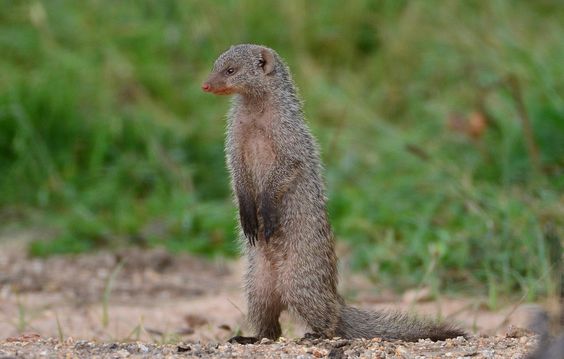- July 13, 2021
- Posted by: Love Uganda Safaris & Tours Ltd
- Category: Blog

Every yearly visits in Queen Elizabeth national park, mongoose tracking is among the not thought of activities for most tourists. But the beauty, adventure and fun that contains in mongoose tracking, this makes it a major high light for every visit in Queen Elizabeth national park.
Mongoose tracking, a non-familiar activity for most travelers. This involves tracking the mongoose species and getting to know more about the species. In Uganda, the banded mongoose specie is the existing specie of the mongoose, tracked in only Queen Elizabeth national park.
Queen Elizabeth national park is among the savannah protected areas of Uganda. I is famous for its beautiful landscapes, fun activities and various wildlife. No wonder is regarded as the “medley of the wilderness” of Uganda.
This national park is located in the western region of Uganda. A place where most of the protected areas of Uganda are located. Queen Elizabeth national park has two sectors dissected into the Ishasha sector and Mweya Peninsular. The Ishasha sector is home to the tree-climbing lions while the Mweya peninsular harbors vast wildlife, lions and more. In the peninsular is where mongoose tracking takes place as well.
The Mweya peninsular is tracked with different game drive tracks that lead through the vegetation of the area.
About the banded mongoose
The banded mongoose is a mongoose specie that lives in open forests, savannah grasslands and it is native from the southern African region to the Sahel region of Africa.
The banded mongoose (mungus mungo) has a big head with a black snort and with small ears. The body of the mongoose is covered with black and brown fur. The inner and lower parts on the other hand, are lighter. The body of the banded mongoose is lined with horizontal Dark brown bars across its back.
It has a long tail, as same as its body with short muscular limbs that have strong long crawls that dig deep into the ground. The breast area of a banded mongoose is lower than the round back-area.
The mongoose live in groups of 7 to 40 individual groups; mixed both male & female. They live in dens and abandoned termite mounds. However in times when a comfortable habitant is elusive, the banded mongoose form compact arrangements. This means they lay on each other with heads face outwards and outside.
The rodents feed on millipedes, termites and are predated by the African wild dog.
Mongoose tracking experience in QENP
Tracking the banded mongoose in Queen Elizabeth national park is an exceptional experience. Tourists shouldn’t miss out as they book their wildlife safaris in Uganda. This activity is called out in the Mweya peninsula of Queen Elizabeth national park in western Uganda.
Banded mongoose tracking involves a team of tourists and researchers tracking these species in their savannahs of the park. Tourists can opt for the morning tracking session or the after tracking period. The tracking of the mongoose takes about one to three hours depending on the location and their movements.
There are about 400 banded mongoose recorded by researchers in the Mweya peninsula. There are in twelve social groups. And a group of only 4 trackers is allowed to track these species per group.
Mongoose tracking is done by foot after a drop off by a tour vehicle to the Mweya peninsula. Since this activity takes place off-track into the mashes, it is advised to always be escorted by the park-guides and researchers.
The tracking processing of the mongoose tracking is done with the help of a tracking device to sense their presence.
The experience of mongoose tracking rewards the visitors with knowledge about their behaviors, characteristics, habits, diet, reproduction, distribution and all about the banded mongoose.
Other Possible activities in QENP
Besides tracking the banded mongoose in the Mweya peninsular, there are other activities available. These include game drives along the peninsula and a boat cruise on the Kazinga. The area is home to other wildlife that can be viewed along the mongoose. These include the loins, leopards, buffalos, genets, warthogs among other.
For a tourists to participate in mongoose tracking they are required to pay an entry to Queen Elizabeth NP. For foreign non-residents $30, $25 for the foreign residents and 30,000 Uganda shillings for the East African citizens.
Queen Elizabeth national park can be accessed by a road transfer from any part of Uganda. From Kampala the road transfer moves towards the western region of Uganda to kasese district. The transfer takes approximately 6 hours driving a distance of 415 kilometers.
The mongoose tracking experience, is an adventure to experience while visiting Queen Elizabeth NP.
Leave a Reply
You must be logged in to post a comment.
